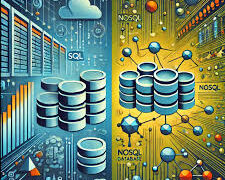Are you ready to take your back end development skills to the next level? In today’s rapidly evolving tech landscape, staying ahead of the game is essential for success. That’s why we’ve compiled a comprehensive list of tools and technologies that every back end developer should have in their arsenal. Whether you’re a seasoned pro or just starting out in the field, this blog post will help you stay current and competitive in the industry. Let’s dive in and explore the must-have resources that will supercharge your backend development career!
What is a Back End Developer?
Welcome to the dynamic world of Back End Development! Behind every sleek and user-friendly website or application lies the intricate work of a back end developer. These tech magicians are the masterminds who make sure everything runs smoothly behind the scenes, handling databases, servers, and applications with finesse. If you’re intrigued by coding languages, databases, and web frameworks, then fasten your seatbelt as we dive into the essential tools and technologies that every back end developer should have in their arsenal!
The Importance of Knowing Tools and Technologies for Back End Developers
As a back end developer, staying updated with the latest tools and technologies is crucial for success in the ever-evolving tech industry. Knowing the right tools not only enhances your skills but also improves efficiency in developing robust backend systems.
By mastering programming languages like Java, Python, or PHP, you can create scalable and high-performing applications tailored to meet diverse business needs. Additionally, understanding database management systems such as MySQL or MongoDB allows you to store and manage data effectively.
Web application frameworks like Node.js, Django, or Laravel provide a structured foundation for building dynamic web applications with ease. Embracing cloud computing platforms like AWS, GCP, or Azure enables you to leverage scalable infrastructure and services cost-effectively.
Containerization tools such as Docker and Kubernetes streamline deployment processes while version control systems like Git ensure seamless collaboration within development teams. Stay ahead of the curve by honing your skills in these essential tools and technologies to excel in the competitive world of back end development.
Programming Languages to Know
When it comes to being a back end developer, knowing the right programming languages is crucial. Java, known for its versatility and scalability, is a popular choice for building enterprise-level applications. Python’s simplicity and readability make it great for rapid development and automation tasks.
PHP has been around for decades and remains widely used in web development, especially in conjunction with popular CMS platforms like WordPress. Each of these languages brings its unique strengths to the table, allowing developers to choose based on project requirements and personal preferences.
By having proficiency in multiple programming languages, back end developers can adapt to different projects seamlessly. Whether it’s handling complex algorithms in Java or building web applications with Python, mastering these languages opens up a world of possibilities in the backend development realm.
Database Management Systems
When it comes to back end development, understanding database management systems is crucial. One of the most widely used systems is MySQL, known for its reliability and performance in handling large datasets.
On the other hand, MongoDB is a NoSQL database that offers flexibility and scalability for managing unstructured data. Both have their strengths and use cases depending on the project requirements.
MySQL’s structured query language (SQL) makes it ideal for traditional relational databases, while MongoDB’s document-based approach suits applications with evolving schemas.
Developers should also be familiar with other options like PostgreSQL or Oracle Database to adapt to diverse project needs. Each system has its own set of features and benefits that cater to specific functionalities within an application architecture.
Web Application Frameworks
When it comes to building robust and efficient web applications, having a solid understanding of various web application frameworks is essential for any back end developer.
Node.js, known for its scalability and speed, is widely used for developing server-side applications using JavaScript. Its event-driven architecture makes it a popular choice among developers.
Django, a high-level Python framework, offers simplicity and flexibility in creating complex web applications quickly. It follows the DRY (Don’t Repeat Yourself) principle, saving time and effort.
Laravel, written in PHP, provides elegant syntax and powerful tools that streamline the development process. It includes built-in features like authentication and routing to enhance productivity.
Cloud Computing Platforms
Cloud computing platforms play a crucial role in the world of back end development. Amazon Web Services (AWS), Google Cloud Platform (GCP), and Microsoft Azure are among the leading providers in this space.
AWS offers a wide range of services, including computing power, storage options, and databases. GCP is known for its scalability and machine learning capabilities, making it a favorite among developers. On the other hand, Microsoft Azure provides hybrid cloud solutions that integrate seamlessly with existing IT infrastructure.
Each platform has its strengths and caters to different needs based on project requirements. AWS is popular for its vast array of services and global reach, while GCP excels in cutting-edge technologies like AI and analytics. Meanwhile, Microsoft Azure stands out for its enterprise-grade security features.
Choosing the right cloud computing platform is essential for back end developers to ensure optimal performance, scalability, and reliability for their applications. By familiarizing themselves with AWS, GCP, and Azure’s offerings, developers can leverage these powerful tools to create robust backend systems efficiently.
Containerization Tools
Containerization tools like Docker and Kubernetes have revolutionized the way backend developers build, deploy, and manage applications.
Docker allows developers to package their applications into containers, making them lightweight and portable across different environments. It ensures consistency in development and deployment processes.
On the other hand, Kubernetes is a powerful orchestration tool that automates the management of containerized applications at scale. It simplifies tasks such as scaling, load balancing, and self-healing of applications.
By using these tools in tandem, backend developers can streamline their workflow, improve efficiency, and enhance application reliability. Containerization has become indispensable in modern software development practices for its flexibility and scalability benefits.
Version Control Systems
Version Control Systems, such as Git, play a crucial role in the workflow of back end developers. By efficiently managing code changes and collaborations within a team, Git ensures that projects are organized and easily maintained. With its branching and merging capabilities, developers can work on different features simultaneously without disrupting the main codebase.
conclusion
Mastering these tools and technologies is essential for every back end developer to stay competitive in the ever-evolving tech industry. By continually learning and adapting to new advancements, developers can enhance their skills and deliver high-quality solutions for complex backend systems. So, keep exploring, experimenting, and honing your expertise to become a proficient back end developer!

































